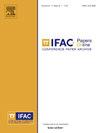A metapopulation SIHURD model⁎
Q3 Engineering
引用次数: 0
Abstract
We enhance our SIHURD model published in Bica et-al (2022) and propose a metapopulation infectious disease mathematical monitoring model where individuals move between discrete spatial patches. We divide the environment into a finite number of spatial patches (e.g., adjacent cities), which preserve homogeneity characteristics. We apply the enhanced SIHURD model presented in this article to each spatial patch.
The novelty of this model lies in introducing parameters that represent individuals’ travel rates between spatial patches, which depend on their disease status. In addition, it assumes that individuals do not change their disease status while travelling between patches.
Our study uses the reproduction number, R0k, for each spatial patch, k = 1, 2, . . . , n, (n > 1) integer, which represents the average number of secondary cases produced by an infected individual in a susceptible population. The system has only a disease-free equilibrium point if R0k ≤ 1. In contrast, if R0k > 1, the system has an endemic equilibrium point. Reproduction numbers R0k are crucial for understanding the spread of infectious diseases and can inform measures to control outbreaks effectively.
Migration between patches fundamentally alters the behaviour of the endemic equilibrium within a patch, rendering it unstable in the proposed model.
求助全文
约1分钟内获得全文
求助全文
来源期刊

IFAC-PapersOnLine
Engineering-Control and Systems Engineering
CiteScore
1.70
自引率
0.00%
发文量
1122
期刊介绍:
All papers from IFAC meetings are published, in partnership with Elsevier, the IFAC Publisher, in theIFAC-PapersOnLine proceedings series hosted at the ScienceDirect web service. This series includes papers previously published in the IFAC website.The main features of the IFAC-PapersOnLine series are: -Online archive including papers from IFAC Symposia, Congresses, Conferences, and most Workshops. -All papers accepted at the meeting are published in PDF format - searchable and citable. -All papers published on the web site can be cited using the IFAC PapersOnLine ISSN and the individual paper DOI (Digital Object Identifier). The site is Open Access in nature - no charge is made to individuals for reading or downloading. Copyright of all papers belongs to IFAC and must be referenced if derivative journal papers are produced from the conference papers. All papers published in IFAC-PapersOnLine have undergone a peer review selection process according to the IFAC rules.
 求助内容:
求助内容: 应助结果提醒方式:
应助结果提醒方式:


